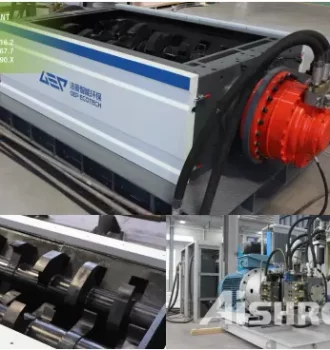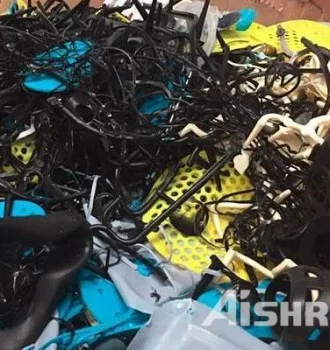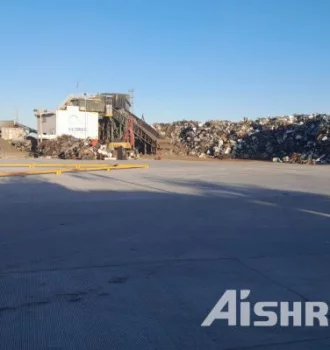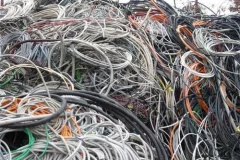
How Should Waste Cables Be Disposed of?
2024-04-01The disposal of waste cables should comply with environmental protection and legal requirements to reduce negative impacts on the environment. The following are some common methods for disposing of waste cables:Common Waste Cable Disposal methods 1. Recycling: The metal parts in waste cables, such as copper and aluminum, can be recycled. These metals can be melted and reused to manufacture new cables or other products.2. Physical processing: The insulation materials on the outer layer of the cables can be separated from the metal part through physical methods. These materials can be further processed into recycled materials or other products.3. Pyrolysis: To generate energy or chemical products by pyrolysis or dissociation of plastic insulation materials in cables.4. Treatment facilities: Some places have dedicated waste treatment facilities that can handle waste cables. These facilities may be processed using various methods, including physical separation, chemical treatment, etc.5. Professional recycling:
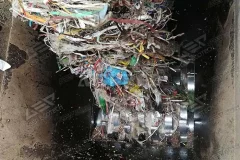
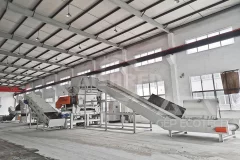
In the pulp and paper production process, it will produce a variety of solid waste (i.e., slag), for example, an annual production capacity of 1 million tons of paper mills, the amount of slag accounted for about 10% of the amount of slag, i.e., 100,000 tons / year, which is a huge number, and highly concentrated, such as improper disposal, but also cause significant pollution and endanger the ecological environment. The composition of paper waste is very complex, mainly contains: rope, cotton yarn, cotton cloth, paper residue, wood chips, rubber, plastic, electronic parts, wire, nails, aluminum cans, PE plastic bottles, waxed paper and glass, stone and sand. Paper waste residue can be used to make solid alternative fuels, a utilization that not only reduces waste, but also replaces traditional fossil energy sources and reduces carbon emissions.The plastics in paper waste residue cannot be degraded, and direct stacking seriously affects the ecological environment. At present, there are paper waste separation
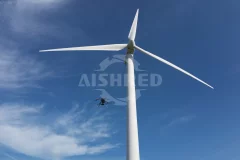

As wind power technology has evolved, the length of wind turbine blades has gradually grown to capture more wind energy. Back in 2014, researchers in the UK surveyed more than 500 wind farms and found that older WTGs built in the 1990s were still producing 3/4 of their power after 19 years. They concluded that most WTGs should be able to run longer than expected, around 25 years before needing to be upgraded.However, as we all know, at some point even the best things must come to an end. While the key to moving the wind industry forward is to continue to reap the benefits of clean energy, there is also a need to consider what to do with the units when they are retired. While the number of retired WTGs worldwide is still low, it will continue to grow as the wind industry expands on a large scale.Fortunately, most WTG components are recyclable, including foundations, towers, gearboxes and generators. WTG blades, however, are difficult to recycle due to their composition.Most WTG blades are composed of
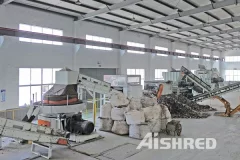

Aiming at the treatment characteristics of various industrial waste, leftovers, by-products and other solid waste, AISHRED has developed this industrial waste recycling system, which is centered on an intelligent operation management system and can meet the processing needs of various treatment projects through different equipment combinations. Not only is the overall technology advanced, but customized solutions also make the actual processing efficiency higher. This system is led by a double shaft industrial waste shredder dedicated to industrial waste treatment, which achieves the regeneration and utilization of useful resources in industrial waste through shredding, sorting, reprocessing, and other methods. For example, high calorific value materials are processed into fuels such as RDF or SRF, while low calorific value materials are processed into corresponding resource products based on their characteristics. The production line can shred various types of industrial waste such as metal, plastic, wood,
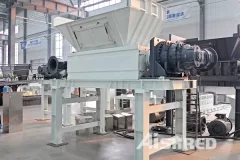
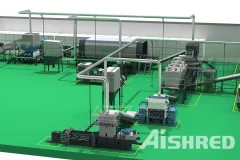
Industrial waste realizes its final value in factory production and is hidden in the corners of factories because there is no way to be discarded directly, plus the high price of disposal. In the "double carbon" target, high coal prices, cement companies increasingly hot competition and other comprehensive background, alternative fuels and co-disposal has received more and more attention, the wave of industrial solid waste preparation of alternative fuels was born. AI Shred environmental protection alternative fuel preparation technology can turn industrial solid waste into reusable "coal" energy, industrial waste disposal is no longer a problem!What are the categories of industrial waste?Industrial waste is divided into cloth and leather trimmings from garment factories and shoe factories, waste residue from paper mills and twisted rope braid material, fiberglass trimmings, waste rubber and plastic, etc. From the perspective of resource recycling, these wood materials to leather trimmings, they can all be
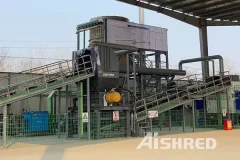
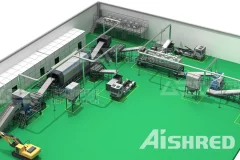
With the development of the economy, the number of waste textiles eliminated by residents has gradually increased, sporadic treatment cannot meet the production requirements, and a sustainable industrial waste system is urgently needed to help us explore together. Today, let's talk about the energy recovery of waste textiles. Because of the addition of comprehensive materials, the thermal value of the waste textiles is very good and the combustion is good. Therefore, it has great potential for incineration power generation and cement kiln. As the energy recovery of waste textiles, we must use industrial waste shredding to deal with the production line. Only through the disposal of this production line can we meet the energy recovery of waste textiles. So what is this industrial waste system? First of all, the core equipment of this system is shredding+sorting, and the connection system is conveying. The purpose of broken is to fully shatter, shear and crushed materials. First, ensure that the material can be
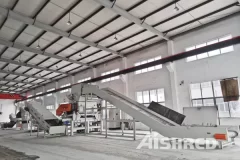
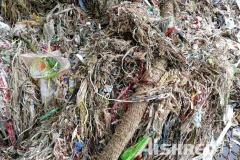
As the environmental protection field continues to deepen, industrial environmental protection ushers in a new round of peak period, industrial solid waste treatment gradually emerged, setting off a new round of governance boom. At this stage, the popular treatment method of general industrial solid waste is resource recycling. Compaction, crushing, sorting, curing, incineration, biological and other solutions are more commonly used and very reasonable. Minimizing the volume of waste means reducing the volume and quantity of solid waste through appropriate methods of treatment. A brief introduction to the disposal of trimmings and solid wastes generated in light industrial production projects, the main materials handled include: textile trimmings, leather waste, non-woven trimmings and other types of light materials. General industrial waste: waste textile, leather and trimmings, fiberglass, leather, wind power leaves, waste rock wool, rubber, plastic, packaging, industrial pallets, etc. Industrial hazardous
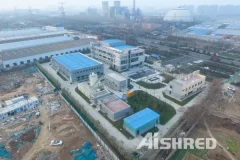
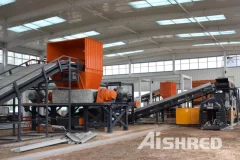
A Chinese recycling company named Central Plains Environmental Protection(CPEP) operates a recycling plant planned and implemented by AIShred - designed for processing various materials such as automotive shredder residue (ASR), electrical and electronic scrap (WEEE) and selectric motors and motor armatures. The process developed together with the company is based on an economic analysis and ensures marketable end products. As part of capacity expansion efforts, CPEP choses a facility that would allow them to process different materials simultaneously at their six-acre site. These include ASR, electrical and electronic scrap, metal composites and meatballs. After AIShred had created an initial concept for a system, extensive tests were carried out in the Yuanyang Test Center with around two to three tons of each of the customer's materials. Based on the experimental data Customers need valid data for their decisions before investing in a new recycling plant. During the tests and analyzes in the test center,
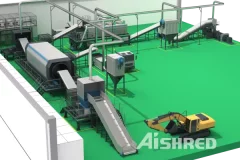
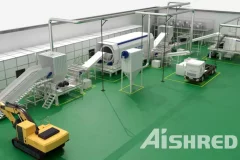
At present, the treatment of industrial waste is not a difficult problem in the industry, but its treatment process will become more complex because of the characteristics of general industrial waste materials. Most of the general industrial wastes belong to composite and low-value wastes. If resources are regenerated directly, the cost of the whole recycling process is high and the process is complex. Therefore, in some industrial or economically underdeveloped places, simple landfill is usually used for disposal, which has a bad effect on the land and environment. In some developed countries and regions, industrial waste is used for collaborative disposal of waste incineration plants, so as to realize energy conversion. At the end of May this year, a customer from Canada finally chose to cooperate with AIShred and purchased a set of industrial waste disposal equipment from our company after multiple inspections and comparisons. Currently, the goods are being prepared.AIShred Disposal Process of Industrial
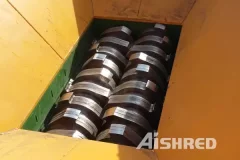
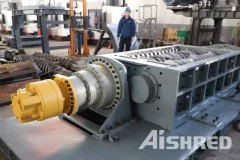
Industrial multi purpose shredders are machines capable of shredding any type of waste: plastic materials, paper and cardboard, wood and organic waste, leather and car rubber, non-ferrous and ferrous metals, etc. Why buy an AIShred industrial shredder? AIShred equipment is universal industrial-type shredders. The machines have good performance and a number of advantages:High torque, capable of shredding many difficult substancesLow power consumption, low noise levelStart at low speed to ensure safetyThe speed can be adjusted to meet the disposal requirements of different materialsVery reliable, can run continuously all the timeLong Blades and Cutters life, repairableAIShred manufactures different kinds of industrial shredders that can be used in various stages of waste disposal or recycling, capable of shredding materials into different sizes. Our main equipment includes, double shaft shredder, single shaft shredder, four shaft shredder, etc.Double-Shaft ShredderThe shredder is equipped with two shafts with
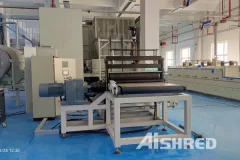
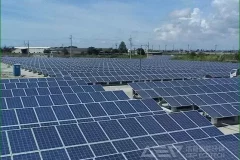
Generally, the service life of solar photovoltaic panels is about 20-30 years. According to statistics, by 2050, the scrapped number of photovoltaic panels will be in the order of ten million tons. Considering the starting point of circular economy, recycling and reusing the scrapped photovoltaic panels can realize the green environmental protection of photovoltaic panels from the source to the terminal. So how should the discarded photovoltaic panels be recycled? Recently, a German company purchased a set of double shaft shear shredder equipment from our company for the disposal, recycling and reuse of solar photovoltaic panels. Crushing is an important part of the recycling process. The photovoltaic panels are first crushed, which is conducive to the next step of recycling and sorting. Usually, double shaft shredder breaking is used to break the photovoltaic panels, and two relatively rotating cutters are used to form the crushing effect of shearing and tearing the materials. The equipment is designed with
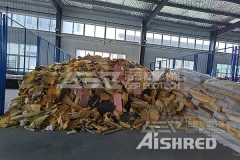
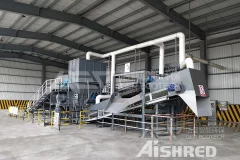
How to Disposal The General Industrial Waste
2022-05-30How to disposal general industrial waste, we should first clarify the purpose of general industrial waste after treatment. After treatment, general industrial waste can be made into rdf/srf, an alternative fuel with high burning value. Compared with fossil fuels, its carbon emission is smaller. It is mostly used in cogeneration projects, and can also be used for collaborative disposal and pyrolysis in cement kilns. It has high economic benefits and fully conforms to the concept of building an energy-saving society. For the treatment of general industrial waste for different purposes, AIShred has launched a series of advanced equipment for the treatment of general industrial waste, and can make different overall treatment schemes for different solid waste materials. Scheme 1: the general industrial waste is transported to the crushing chamber of the industrial waste crusher through the chain plate conveyor for crushing. After the industrial waste is crushed, it is transported through the belt conveyor. At the

